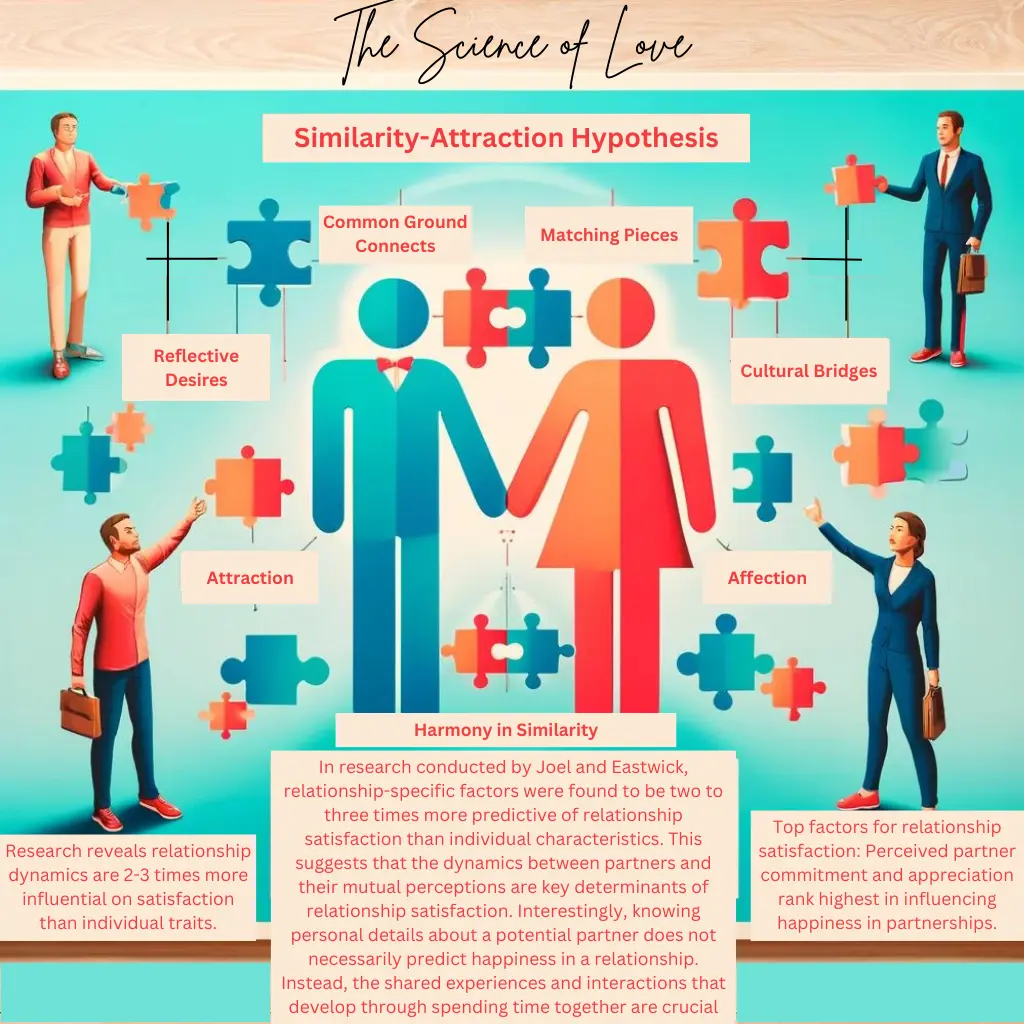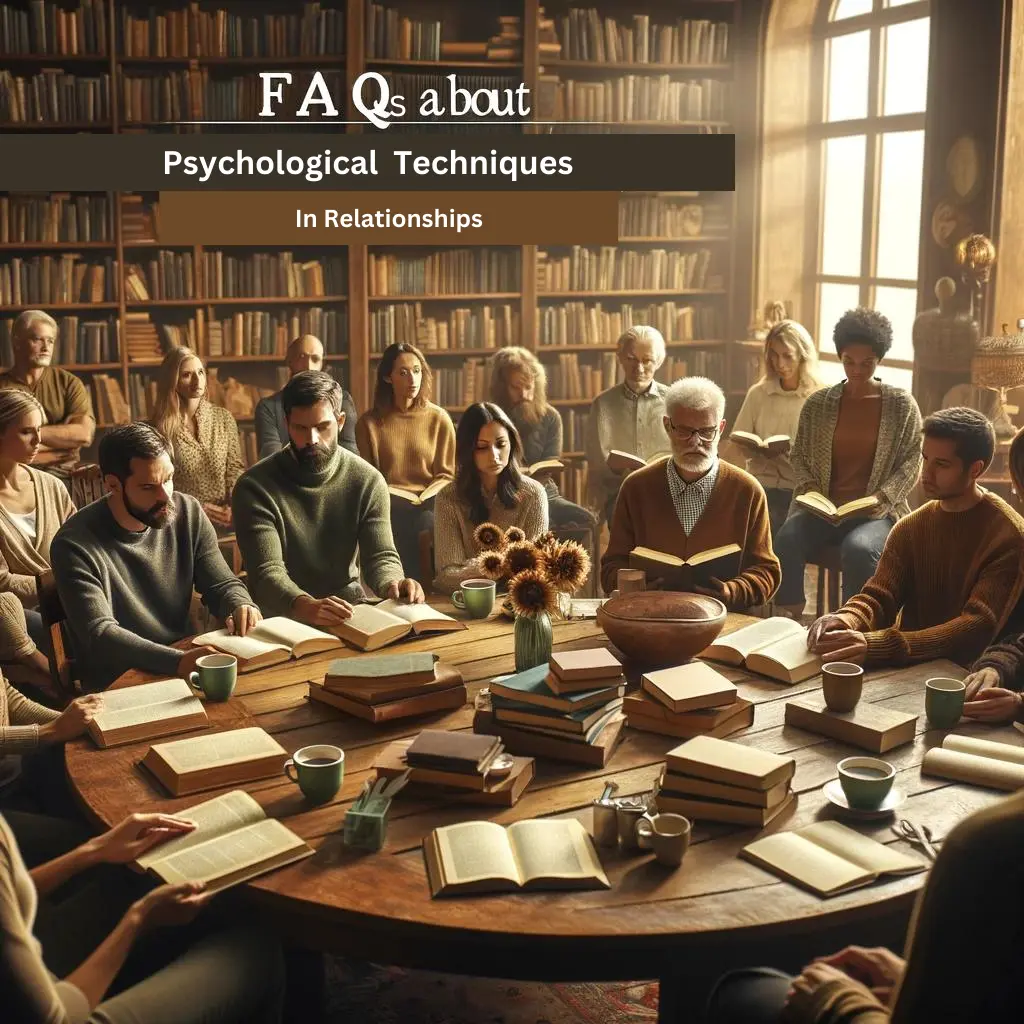- Introduction to Tricks to Make Someone Fall for You
- Understanding the Science of Attraction
- Psychological Tricks to Increase Attraction
- Mirroring Body Language
- Sharing Exciting Experiences
- The Power of Favors and Dependency
- Building a Deeper Emotional Connection
- Personal Disclosure
- Using Communication to Foster Love
- The Importance of Tone and Voice
- Ethical Considerations in Psychological Attraction Techniques
- Conclusion to Psychological Tricks to Make Someone Fall for You
- Frequently Asked Questions (FAQs)
- Q1: Can psychological techniques really make someone fall in love?
- Q2: Are there any risks in using psychological attraction techniques?
- Q3: How important is physical attraction in a relationship?
- Q4: What is the most effective psychological trick to increase attraction?
- Q5: How can I improve my active listening skills?
- Q6: Is sharing personal stories and secrets with someone always a good idea?
- Q7: How can I tell if someone is using psychological techniques on me?
- Q8: Are these techniques applicable in all types of relationships?
- Frequently Asked Questions (FAQs)
Introduction to Tricks to Make Someone Fall for You
Love, an enigma as old as time itself, has captivated philosophers, poets, and scientists across centuries. Yet, despite its profound presence in our lives, the essence of what drives this powerful emotion remains a complex interplay of psychology and chemistry. Today, modern psychology and behavioral sciences offer intriguing insights into the mechanisms of attraction and love. This article delves into the scientific underpinnings of love and attraction, presenting practical, psychological tricks designed to foster deep connections. Whether you’re a hopeless romantic or a curious skeptic, the science of love has revelations for everyone. Let’s explore how understanding psychological principles can not only demystify this profound emotion but also offer actionable ways to spark a genuine connection with someone special.
By intertwining the threads of psychological theories and empirical research, we aim to uncover the secrets to making someone fall for you — responsibly and ethically. From the adrenaline of exciting experiences to the subtleties of body language and emotional vulnerability, each piece of advice is rooted in scientific studies and psychological practices. Get ready to embark on a journey into the heart of human emotion, guided by science and shaped by the desire to build meaningful, loving relationships.

Understanding the Science of Attraction
What Makes Us Fall in Love?
Attraction is not just a simple reaction to someone’s physical appearance; it’s a complex interplay of psychological dynamics and biochemical responses. To understand the science of love, we must explore both the psychological theories that explain our attractions and the key hormones that these emotional and physical connections trigger.
Psychological Theories of Attraction
- Similarity-Attraction Hypothesis: This theory suggests that we are naturally drawn to individuals who are similar to us in terms of attitudes, values, and backgrounds. Research indicates that shared beliefs and values foster a sense of understanding and connection, making communication easier and conflicts less likely. The comfort of familiarity plays a crucial role in how relationships form and flourish.
- Reinforcement-Affect Model: According to this model, we tend to like people who are associated with positive feelings and dislike those associated with negative feelings. If someone’s presence consistently makes us feel good, we attribute those positive feelings to that person, which increases their attractiveness in our eyes. This could be due to shared joyful experiences, their encouragement during tough times, or simply their ability to make us laugh.
- Social Exchange Theory: This theory posits that our social behavior is the result of an exchange process aimed at maximizing benefits and minimizing costs. In the context of relationships, we are more likely to fall in love with and stay attracted to partners who bring us rewards, such as emotional support, companionship, and shared responsibilities, that outweigh the costs, such as compromise and vulnerability.

Key Hormones Involved in Love
Alongside psychological theories, the biochemical perspective provides an understanding of how feelings of love are a potent mix of hormones that affect how we think and feel:
- Dopamine: Often referred to as the ‘pleasure chemical,’ dopamine is associated with feelings of euphoria, bliss, and a surge of energy. When we are attracted to someone, our brain releases dopamine, making us feel excited and energetic. It’s the same hormone that is released during pleasurable activities like eating and exercise.
- Oxytocin: Known as the ‘cuddle hormone,’ oxytocin is released during hugging, touching, and intimacy, strengthening the bond between individuals. It promotes feelings of contentment, reduces anxiety, and fosters a sense of calm and security with one’s partner.
- Serotonin: This hormone stabilizes our mood, feelings of well-being, and happiness. It’s also linked to sexual desire and function, which play significant roles in romantic relationships. Low levels of serotonin can be associated with feelings of loneliness and depression, while healthy levels can enhance public display of affection and increase emotional attachments.
By bridging these psychological theories with the hormonal changes they induce, we gain a fuller understanding of what drives our attractions and attachments in romantic relationships. These insights not only explain the ‘how’ but also empower us to foster deeper connections through an informed and thoughtful approach to love.

The Role of Physical and Emotional Cues
Attraction is influenced by an array of factors, with physical appearance and emotional cues playing pivotal roles. Understanding these aspects can help deepen our relationships by fostering genuine connections and enhancing mutual understanding.
Impact of Physical Appearance and Body Language
- Physical Appearance: It’s no secret that physical attraction often serves as the initial draw in many relationships. Features such as facial symmetry, body proportions, and overall health can signal genetic fitness and fertility, which, from an evolutionary perspective, influence mate selection. However, cultural standards and personal preferences also heavily dictate what individuals find attractive, making physical attraction a complex and dynamic component of romantic relationships.
- Body Language: Beyond static physical features, body language provides dynamic cues that significantly affect perception and attraction. Non-verbal signals like eye contact, smiling, and mirroring movements can communicate interest and create feelings of rapport. Open body postures, proximity, and gentle touches are also powerful in signaling availability and attraction. These behaviors not only convey our emotional state but can also influence the emotional state of others, enhancing the connection through a kind of unspoken dialogue.
Importance of Emotional Availability and Vulnerability
- Emotional Availability: Being emotionally available involves being receptive to both expressing and listening to emotions. It requires a level of openness that can significantly enhance relational bonds. When individuals show emotional availability, they are viewed as more trustworthy and supportive, qualities that are crucial for deep and lasting relationships. This availability fosters a safe space where both partners feel valued and understood, paving the way for stronger emotional connections.
- Vulnerability: Vulnerability goes hand in hand with emotional availability. It involves the courage to share one’s true thoughts, feelings, and fears. Brené Brown, a renowned researcher, highlights vulnerability as the core of all emotions. To be vulnerable with someone is to let them see you without masks, increasing intimacy and trust. It allows for the development of a deeper bond because it signals to the other person that they are seen and appreciated for their true self, imperfections and all. Moreover, when one person takes the step to be vulnerable, it often reciprocates, creating a loop of trust and openness.
Understanding and leveraging these physical and emotional cues can significantly affect how relationships are formed and maintained. By being mindful of how we present ourselves physically and how we communicate our emotions, we can create more meaningful and enduring connections.

Psychological Tricks to Increase Attraction
Mirroring Body Language
Mirroring body language is a subtle yet powerful technique to enhance rapport and attraction between individuals. This psychological trick involves subtly copying the gestures, expressions, and posture of the person you are interacting with. It’s a non-verbal way of saying, “I’m like you; we are alike,” which can significantly strengthen the perceived connection between individuals. Here’s how mirroring can work its magic in the realm of attraction:
- Subconscious Bonding: When you mirror someone’s body language, it often leads to a phenomenon known as limbic synchrony, where the emotional centers of your brains begin to align. This synchronization can create a subtle, emotional resonance, making each person feel more emotionally connected to the other without necessarily knowing why. This sense of unity can be particularly potent in initial interactions, setting a foundation of compatibility.
- Trust and Empathy: Mirroring can convey empathy and validation, showing that you are engaged and attentive to the person you are interacting with. When people see their own expressions and gestures reflected back at them, it sends a signal that their feelings are understood and shared. This not only boosts feelings of trust but also makes the person doing the mirroring seem more likable and approachable.
- Breaking Down Barriers: By mimicking the nonverbal cues of others, you can help break down defenses, making individuals more open to sharing and connecting. This can be especially effective in new relationships or encounters, where initial awkwardness or discomfort might hinder deeper interaction. Mirroring can smooth over these early bumps, fostering a quicker and deeper connection.
- Enhancing Positive Communication: Effective mirroring also involves syncing up with the positive body language of others, such as nodding, smiling, and leaning in. These actions not only show active listening and engagement but also enhance the positive feelings during the interaction. People are generally more attracted to those who are responsive in conversations, as it makes the interaction more enjoyable and rewarding.
- Subtlety is Key: It’s important to note that while mirroring can be highly effective, its success largely depends on its subtlety. Over-mirroring or obvious mimicking can feel disingenuous or manipulative. The goal is to be natural and unobtrusive in reflecting the other person’s posture and movements, which should feel like a natural rhythm in the conversation rather than a forced mimicry.
By employing the technique of mirroring body language, individuals can foster a sense of familiarity and comfort that enhances mutual attraction and rapport. This trick, grounded in psychological research, leverages the basic human desire for connection and understanding, making it a powerful tool in the art of attraction.

Sharing Exciting Experiences
One intriguing aspect of human psychology is how our emotions can be influenced by our physical states. The concept of ‘misattribution of arousal’ plays a significant role in this phenomenon, particularly in how individuals perceive attraction during exciting or adrenaline-pumping activities. Let’s explore how sharing thrilling experiences can amplify romantic attraction and strengthen bonds between people.
- Understanding Misattribution of Arousal: This psychological concept suggests that people often misinterpret physiological arousal (like increased heartbeat, sweating, or adrenaline rushes) as emotional arousal. For example, if two people experience something exhilarating together, such as a roller coaster ride or bungee jumping, the physiological arousal caused by the activity can be misinterpreted as romantic or sexual attraction to the companion. This is because the body’s stress response (increased heart rate, heightened senses, etc.) is similar to the physical effects of romantic attraction.
- Enhancing Emotional Connection: Sharing emotionally charged experiences can create a powerful emotional bond. When people go through intense situations together, whether they are physically demanding, fear-inducing, or just exciting, it fosters a sense of unity and camaraderie. This shared vulnerability and reliance can quickly deepen the perceived connection, making each person more significant in the other’s eyes.
- Creating Memorable Bonds: Exciting activities also tend to be memorable. Participating in such activities with someone can anchor the person in a memorable context, associating them with positive emotions and adrenaline-fueled joy. These memories can create lasting impressions, making one person more attracted to the other long after the activity is over.
- Increasing Intimacy Through Shared Experiences: When you share unique and thrilling experiences with someone, it can set the stage for increased intimacy. These experiences can lead to open, honest exchanges and a willingness to share personal feelings and stories, propelled by the heightened emotional state. This openness is a crucial ingredient in building a deeper and more meaningful relationship.
- Practical Application: For those looking to enhance attraction, planning dates or activities that involve a bit of adventure or challenge could be significantly beneficial. Activities like hiking to a breathtaking view, trying out a new sport together, or attending a suspenseful movie can be effective ways to stimulate the kind of physiological arousal that might just translate into a stronger romantic connection.
By strategically incorporating exciting experiences into the dynamics of a relationship, individuals can harness the psychological effects of misattribution of arousal to deepen connections and enhance mutual attraction. This approach not only makes the relationship more exciting but also builds a foundation of unique shared experiences that can strengthen the emotional bond.

The Power of Favors and Dependency
A counterintuitive yet effective psychological tactic in building attraction and likability is leveraging the power of favors and dependency, exemplified by the Ben Franklin effect. This concept suggests that doing someone a favor can actually lead the favor-giver to like the person they helped more. This effect turns the common notion of “we like people who help us” on its head, suggesting that the giver of the favor also gains positive feelings toward the recipient.
Understanding the Ben Franklin Effect: The Ben Franklin effect is named after the American polymath Benjamin Franklin, who famously used this psychological trick to win over a rival legislator. Franklin borrowed a rare book from the legislator, a favor which not only showed trust in the legislator’s character but also subtly flattered him. When Franklin returned the book with gratitude, the legislator, who had done Franklin the favor of lending the book, found himself with a more favorable impression of Franklin than before. This anecdote illustrates the psychological dynamics where doing someone a favor can lead to increased positive feelings towards that person.
Mechanics of the Effect:
- Cognitive Dissonance: The Ben Franklin effect can be partially explained by cognitive dissonance, which occurs when a person’s actions are not aligned with their attitudes or feelings. When someone does a favor for another, they might initially not have strong positive feelings towards that person. However, to resolve the dissonance between their action (doing the favor) and their feelings, they adjust their feelings to match their actions, resulting in increased liking towards the person they helped.
- Self-Perception: Another explanation comes from the self-perception theory, which suggests that individuals infer their attitudes by observing their own behavior. If they see themselves doing someone a favor, they conclude they must like that person, as their actions align with what one would do for a liked individual.
Practical Application in Relationships:
- Encouraging Reciprocity: By asking for small, manageable favors from someone you wish to get closer to, you can initiate a cycle of goodwill and positive feelings. The act of fulfilling the favor makes the giver invest a bit of themselves in the relationship, potentially leading to a greater sense of involvement and liking.
- Building Trust and Cooperation: When favors are exchanged, it builds a foundation of trust and cooperation. This mutual give-and-take can deepen the connection, as each party feels valued and appreciated.
- Increasing Interdependence: As favors are exchanged and dependency grows, a natural interdependence develops. This can enhance closeness and attraction, as both parties feel increasingly significant to each other’s lives.
Understanding and utilizing the Ben Franklin effect can be a subtle but powerful tool in relationship-building. By gracefully requesting and giving favors, individuals can foster a deeper connection and mutual liking, enhancing both the bond and the attraction between them. This psychological strategy not only enriches personal interactions but also adds a layer of depth to how relationships can evolve over time through simple, thoughtful gestures.
Building a Deeper Emotional Connection

Active Listening Skills
Active listening is more than just a method of communication; it’s a powerful tool to build trust, understanding, and a deeper emotional connection. By genuinely engaging in what others are saying and showing sincere interest, active listening can transform conversations into meaningful interactions that strengthen relationships. Here are some key techniques for enhancing emotional ties through active listening:
- Full Attention to the Speaker:
- Avoid Distractions: Ensure that all potential distractions, such as phones, computers, or even wandering thoughts, are minimized. Giving undivided attention shows that you value what the speaker has to say.
- Body Language: Adopt an open posture, make eye contact, and nod appropriately to show engagement. These non-verbal cues reinforce that you are fully present in the conversation.
- Reflecting and Clarifying:
- Paraphrasing: After the speaker makes a point, paraphrase their message in your own words to show that you understand their perspective. This not only confirms that you are listening but also helps clarify any misunderstandings right away.
- Ask Clarifying Questions: If something isn’t clear, ask questions that encourage deeper explanation. This demonstrates your interest in fully understanding their thoughts and feelings.
- Empathizing:
- Acknowledge Feelings: Recognize and validate the speaker’s emotions by making empathetic statements like, “It sounds like you feel…” or “That must have been really challenging for you.” Acknowledging their feelings can make the speaker feel heard and understood on a deeper emotional level.
- Avoid Judgement: Maintain a neutral and supportive stance. Being non-judgmental helps the speaker feel safe to express thoughts and emotions that they might otherwise keep hidden.
- Responding Appropriately:
- Provide Feedback Thoughtfully: When it’s your turn to speak, respond with insights or feedback that show you’ve genuinely considered their words. Avoid the urge to reply with quick fixes or unsolicited advice unless specifically asked for.
- Keep the Focus on the Speaker: Resist shifting the conversation to your experiences unless it genuinely adds value to the dialogue. Keeping the focus on the speaker shows respect for their sharing and can encourage further openness.
- Encouraging Continuation:
- Use Encouraging Prompts: Simple verbal affirmations like “I see,” “Go on,” or “Tell me more” can encourage the speaker to continue, showing that you are interested and engaged in the conversation.
- Express Appreciation: Thank the speaker for sharing their thoughts and feelings. Expressing gratitude for their openness reinforces positive feelings and encourages future dialogues.
Active listening is a skill that fosters not only better communication but also deeper emotional connections. By practicing these techniques, you can enhance your relationships, making your interactions more fulfilling and meaningful. This level of attentiveness and care in communication helps build a strong emotional foundation, vital for lasting relationships.
Personal Disclosure
Personal disclosure, or the act of sharing personal stories and secrets, is a cornerstone of building intimacy in relationships. This practice, grounded in the principle of self-disclosure, involves revealing one’s own thoughts, feelings, and experiences to another person. Let’s explore how this can significantly deepen the bonds of intimacy and trust between individuals.

Principle of Self-Disclosure:
- Gradual and Reciprocal: Self-disclosure tends to be most effective when it occurs gradually and is reciprocal. This means that as one person shares something personal, the other person responds by revealing something personal in return. This exchange fosters mutual vulnerability, which is essential for deepening trust.
- Increasing Intimacy: As individuals share more about themselves, they reveal their inner world. This not only increases transparency but also allows the other person to understand them on a deeper, more emotional level. The sharing of personal fears, aspirations, and past experiences can significantly enhance the feeling of closeness.
- Reducing Uncertainty: In the initial stages of a relationship, uncertainties about each other’s thoughts and feelings can be high. Personal disclosure helps reduce these uncertainties, providing a clearer picture of who each person truly is, their values, and how they react to various situations.
Impact of Sharing Personal Stories and Secrets:
- Building Trust: Trust builds when individuals share personal information and find that their vulnerability is met with support and understanding. This forms a feedback loop where each act of disclosure leads to greater feelings of safety and intimacy.
- Emotional Safety: When personal stories are met with empathy and acceptance, it creates a safe space for both individuals to express themselves freely. This emotional safety is crucial for developing a strong, resilient relationship.
- Creating Unique Bonds: The stories and secrets that people choose to share often contain experiences and emotions not known to others. By sharing these unique parts of oneself, individuals create exclusive bonds that are not replicated in other relationships.
- Enhancing Personal Identity: Sharing deeply personal aspects allows individuals to express and validate their own identity within the relationship. This not only strengthens self-concept but also integrates their identity with that of their partner’s, promoting a unified bond.
Effective Practices in Personal Disclosure:
- Timing and Context: The right timing and a supportive context are crucial for effective self-disclosure. Sharing personal information in a calm, private setting can enhance receptivity and the quality of interaction.
- Sensitivity to Boundaries: It’s important to remain sensitive to the comfort levels of both parties. Pushing for too much intimacy too soon can backfire, so it’s vital to gauge and respect each other’s boundaries.
- Listening in Return: Just as important as sharing, is how one listens and reacts to the disclosures of others. Showing genuine interest, empathy, and non-judgmental understanding is essential for encouraging ongoing openness.
Incorporating personal disclosure into interactions not only deepens intimacy but also enriches the relationship, making it more robust and interconnected. This dynamic encourages a deeper understanding and appreciation of each other, laying a strong foundation for lasting companionship.
Using Communication to Foster Love

Positive Reinforcement
Positive reinforcement in communication is a powerful tool in fostering love and strengthening emotional bonds in relationships. This approach involves expressing appreciation, admiration, and positive feedback, which can significantly enhance the affection and connection between individuals. Let’s delve into how positive reinforcement works and its effects on relationships.
Mechanics of Positive Reinforcement:
- Behavioral Encouragement: Positive reinforcement occurs when a behavior is followed by a favorable outcome, thereby increasing the likelihood of that behavior occurring again in the future. In the context of relationships, when one partner acknowledges or praises the other’s actions or qualities, it not only makes the recipient feel valued but also more likely to repeat the behavior.
- Emotional Validation: Expressing appreciation and admiration provides emotional validation, which is crucial for personal self-worth and security within the relationship. Feeling valued and understood by one’s partner can boost self-esteem and overall happiness.
Strengthening Bonds Through Appreciation and Admiration:
- Creating a Positive Feedback Loop: Regular expressions of gratitude and recognition can create a positive feedback loop where both partners feel more loved and motivated to maintain or enhance their contributions to the relationship. This loop promotes a nurturing and supportive environment, conducive to a healthy, long-term relationship.
- Enhancing Emotional Connection: When individuals feel appreciated for who they are and what they do, it deepens their emotional connection to their partner. They are likely to feel more emotionally invested and connected, reinforcing the bond and intimacy between them.
- Reducing Conflict: Positive reinforcement can also play a crucial role in conflict resolution. By focusing on each other’s positive attributes and behaviors, couples can maintain a more balanced perspective of their relationship, which helps in reducing the severity and frequency of conflicts.
- Building Resilience in Relationships: Relationships that regularly incorporate positive reinforcement are generally more resilient. Appreciation helps partners navigate through tough times by reminding them of their mutual respect and admiration, providing a stronger foundation to tackle challenges together.
Practical Ways to Implement Positive Reinforcement:
- Verbal Expressions: Simple phrases like “Thank you,” “I appreciate what you did,” or “I’m proud of you” can have a profound impact. These expressions should be specific and genuine to effectively communicate your admiration.
- Non-verbal Cues: Smiles, hugs, and other affectionate gestures can reinforce positive feelings without words.
- Rewarding Actions: Small gestures or surprises as a form of appreciation for specific actions can also serve as effective positive reinforcement, enhancing the perceived value of the behaviors.
- Public Acknowledgment: Expressing admiration and gratitude in front of others, such as friends or family, not only reinforces the behavior but also publicly affirms the value of the partner and their actions.
Using positive reinforcement effectively in communication is about more than just avoiding negatives; it’s about actively fostering an environment of mutual respect, appreciation, and emotional support. This not only enriches the relationship but also cultivates a lasting bond filled with affection and mutual respect.

The Importance of Tone and Voice
The tone of voice is a critical yet often overlooked element of communication that plays a significant role in shaping perceptions of affection and empathy within relationships. The way we speak can convey a wide range of subtle emotional cues, significantly impacting how our messages are received and interpreted. Research in the fields of psychology and interpersonal communication provides valuable insights into just how influential tone can be in enhancing or hindering relational bonds.
Influence of Tone of Voice on Perceptions:
- Conveying Emotional Nuance: The tone of voice carries crucial emotional information. For instance, a warm, gentle tone can convey affection, openness, and empathy, making the listener feel cared for and valued. Conversely, a harsh or abrupt tone might signal anger, irritation, or disinterest, which can create feelings of distance or unease.
- Enhancing Verbal Content: Research indicates that the emotional impact of a spoken message often relies more on how something is said rather than what is said. For example, the phrase “I love you” can be imbued with sincerity, indifference, or even sarcasm, depending entirely on the speaker’s tone. This highlights how tone can either enhance or undermine the message’s intended effect.
- Building Trust and Credibility: A consistent, calm, and sincere tone can help build trust and credibility over time. In romantic relationships, trust is foundational, and a tone that consistently reflects genuine care and respect can strengthen this trust.
- Facilitating Empathy: Studies have shown that a softer, more level tone can make it easier for people to empathize with each other. When someone speaks in a tone that is empathetic and understanding, it encourages a similar response from the listener, fostering a deeper emotional connection and mutual understanding.
Practical Applications in Relationships:
- Mindful Speaking: Being mindful of your tone, especially during difficult conversations, can prevent unnecessary escalations and misunderstandings. It’s important to adopt a tone that conveys respect and understanding, even in disagreement.
- Voice Modulation: Modulating one’s voice to match the emotional state of a conversation can enhance connectivity. For example, lowering your voice during a personal and intimate conversation can create a sense of closeness and exclusivity.
- Active Listening and Response: Responding to a partner’s disclosures with a tone of voice that communicates genuine interest and concern can validate their feelings and encourage further openness.
- Consistency in Tone: Maintaining a consistent tone that aligns with positive emotional states can help reinforce a positive atmosphere in the relationship, making affectionate interactions more natural and frequent.
Understanding and consciously utilizing the tone of voice can significantly affect relationship dynamics, enhancing perceptions of affection, empathy, and understanding. It is a powerful tool in communication that, when used wisely, can deepen connections and build a stronger, more empathetic bond between partners.
Ethical Considerations in Psychological Attraction Techniques
While psychological techniques can effectively enhance attraction and deepen relationships, their use raises important ethical considerations. It’s crucial to navigate these methods with a strong sense of responsibility and integrity, ensuring that the pursuit of emotional connection does not compromise ethical standards, or the autonomy of the individuals involved.

Ethical Implications of Psychological Techniques:
- Manipulation vs. Influence: There’s a fine line between using psychological strategies to influence relationships positively and manipulating someone’s feelings or decisions without their consent. Techniques intended to elicit or enhance feelings of love should be used with caution to avoid manipulation, ensuring that actions are transparent, and intentions are clear.
- Consent and Autonomy: All parties in a relationship should have the autonomy to make their own choices about their emotional involvement. Techniques that might subconsciously influence someone’s feelings, like mirroring or strategic self-disclosure, should be practiced with an awareness of the other person’s right to make informed decisions about their relationships.
- Respect for Emotional Boundaries: It’s important to respect individual emotional boundaries and not use psychological knowledge to exploit vulnerabilities. Understanding someone’s emotional triggers or past traumas should guide compassionate behavior rather than be seen as tools for personal gain.
Importance of Genuine Intentions and Mutual Respect:
- Foundation of Trust: Genuine intentions form the bedrock of trust in any relationship. Employing psychological techniques should aim to enhance mutual understanding and connection, not to deceive or gain unfair advantage. When both partners are aware and consenting to engage in activities that increase intimacy, such as shared thrilling experiences or deep conversations, it enriches the relationship authentically.
- Mutual Benefit: The use of psychological attraction techniques should aim for outcomes beneficial to all parties involved. This is not just about one person feeling more loved or connected, but about both partners experiencing greater happiness and fulfillment from their interaction.
- Transparency: Being transparent about one’s intentions and methods fosters an atmosphere of trust and respect. For instance, if adopting techniques like active listening or positive reinforcement, it might be beneficial to share these intentions with your partner, framing them as efforts to improve the quality of the relationship rather than as tactics to elicit specific responses.
- Ethical Responsibility: Individuals must consider their ethical responsibility in relationships, recognizing the impact of their actions on others’ emotions and well-being. Using psychological knowledge responsibly means prioritizing the health and success of the relationship over short-term gains in affection or attention.
In conclusion, while psychological attraction techniques can be powerful tools for enhancing relationships, they must be used with an ethical framework that prioritizes respect, consent, and genuine intentions. Relationships built on these principles are more likely to be healthy, fulfilling, and enduring, benefiting from enhanced emotional connections that are ethically sound and mutually satisfying.

Conclusion to Psychological Tricks to Make Someone Fall for You
Throughout this exploration of the science of love and the psychological tricks that can influence attraction, we’ve delved into how understanding the mechanisms of attraction can significantly enhance our connections. From the foundational theories of why we fall for someone to the subtle cues of body language and tone, the journey of attraction and love is deeply rooted in both our biology and psychology.
We have also discussed practical, psychological techniques such as mirroring body language, sharing exciting experiences, and practicing active listening—all aimed at fostering deeper bonds and enhancing emotional intimacy. Each of these methods, grounded in scientific research, provides a roadmap for strengthening relationships and building meaningful connections.
However, it is paramount that these techniques are employed with the highest ethical standards in mind, prioritizing genuine intentions and mutual respect. The goal of using such knowledge should always be to enrich relationships in a way that is respectful, consensual, and transparent. Love, after all, thrives in an environment where both partners feel valued, understood, and genuinely cared for.
As we integrate these insights into our lives, let us approach them with authenticity and an ethical mindset, ensuring that our actions always align with a deep respect for the emotional well-being and autonomy of others.
If you found these insights into the science of love enlightening and wish to discover more about enhancing your relationships and personal growth, consider subscribing to our newsletter. You’ll gain access to a wealth of knowledge on relationships, personal development, and much more, helping you to continue building healthy, fulfilling connections in every area of your life. Join our community today and start your journey toward more meaningful and enriched relationships!
Frequently Asked Questions (FAQs)

Q1: Can psychological techniques really make someone fall in love?
A: Psychological techniques can increase attraction and deepen connections, but they cannot force genuine love, which is a complex and deeply personal emotion. These techniques are tools to enhance existing feelings and foster closer bonds through understanding and mutual experience.
Q2: Are there any risks in using psychological attraction techniques?
A: When used ethically and with genuine intentions, these techniques are generally safe and can be beneficial for relationship building. However, misuse or manipulation can lead to distrust and might negatively impact relationships. It is crucial to use these methods responsibly, with awareness of the other person’s feelings and consent.
Q3: How important is physical attraction in a relationship?
A: Physical attraction often plays a role in the initial stages of a relationship, but it is usually the emotional and intellectual connections that sustain a long-term bond. While physical attraction can spark interest, shared values, emotional intimacy, and mutual respect are essential for deeper and lasting relationships.
Q4: What is the most effective psychological trick to increase attraction?
A: Mirroring body language is one of the most effective and easy-to-implement techniques. It subtly enhances rapport and emotional alignment without being overt or manipulative. When combined with genuine interest and empathetic communication, mirroring can significantly boost mutual attraction and connection.
Q5: How can I improve my active listening skills?
A: Active listening can be improved by practicing full attention during conversations, minimizing distractions, reflecting and clarifying what the other person says, acknowledging their feelings, and responding appropriately. Regular practice in various settings will enhance your ability to listen actively and empathetically.
Q6: Is sharing personal stories and secrets with someone always a good idea?
A: Sharing personal stories and secrets can deepen intimacy, but it’s important to consider the timing and the level of trust already established in the relationship. Gradual disclosure, matched with the other person’s openness, ensures that vulnerability is handled with care and respect, fostering a safe and supportive environment.
Q7: How can I tell if someone is using psychological techniques on me?
A: Awareness of psychological techniques can make you more observant about behaviors such as excessive mirroring, strategic compliments, or patterns that seem aimed at eliciting certain responses. Trust your instincts, and if something feels manipulative or insincere, it might be worth a deeper examination of the relationship dynamics.
Q8: Are these techniques applicable in all types of relationships?
A: While primarily discussed in the context of romantic relationships, many of these techniques, like active listening and expressing appreciation, are effective in various types of relationships, including friendships, family relationships, and professional interactions. The key is to adapt them appropriately to each unique relationship dynamic.
This FAQ section aims to address common questions and concerns about the use of psychological techniques in relationships, providing clarity and encouraging responsible and ethical practice.
















Simply wish to say your article is as amazing The clearness in your post is just nice and i could assume youre an expert on this subject Well with your permission let me to grab your feed to keep updated with forthcoming post Thanks a million and please carry on the gratifying work
I was recommended this website by my cousin I am not sure whether this post is written by him as nobody else know such detailed about my difficulty You are wonderful Thanks
helloI like your writing very so much proportion we keep up a correspondence extra approximately your post on AOL I need an expert in this space to unravel my problem May be that is you Taking a look forward to see you